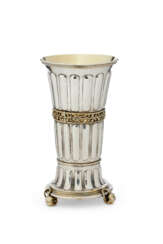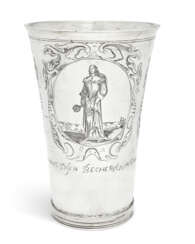trompette

Alexandre-Jean Dubois-Drahonet was a French painter, lithographer, and portraitist. Dubois-Drahonet studied at the École des Beaux-Arts in Paris under the landscape painter Jean-Victor Bertin. He gained recognition as a portrait painter, and his clients included members of the French royal family.
Dubois-Drahonet exhibited regularly at the Paris Salon. He also produced genre scenes depicting everyday life, which were characterized by their vivid colors and loose, sketch-like style that captured the immediacy and vitality of his subjects.
In addition to his work as a painter, Dubois-Drahonet was also a skilled lithographer, and he produced a number of lithographic prints based on his own paintings as well as those of other artists. His lithographs were widely admired for their technical skill and ability to capture the essence of his subjects.
Today, Dubois-Drahonet's paintings and lithographs can be found in the collections of museums around the world, including the Louvre Museum in Paris and the National Gallery of Art in Washington, D.C. His work continues to be highly regarded for its innovative approach to landscape and genre painting, and its ability to capture the vitality and beauty of everyday life in 19th-century France.











Jean-Louis André Théodore Géricault was a French painter and lithographer, celebrated for his pivotal role in the Romantic movement. Born in Rouen, France, in 1791, and educated among the elite in Paris, Géricault developed a profound connection with art from a young age, influenced by his training under notable figures like Carle Vernet and Pierre-Narcisse Guérin. This foundation set him on a path that diverged significantly from the classical traditions of his time.
Géricault's artistry is best known for its vibrant energy and emotional intensity, characteristics that marked a departure from the Neoclassical style predominant in the early 19th century. His most famous work, "The Raft of the Medusa" (1818–19), is a monumental canvas that dramatizes the tragic aftermath of the French shipwreck, Méduse, capturing the public and critical imagination for its raw portrayal of human despair and resilience. This painting not only criticized the French government but also showcased Géricault's masterful handling of drama, becoming an iconic symbol of Romanticism.
Throughout his career, Géricault remained deeply engaged with contemporary issues and the human condition, exploring themes of mental illness, social injustice, and the raw power of nature versus human vulnerability. His series of portraits depicting patients with mental illnesses, created towards the end of his life, highlighted his empathy and innovative approach to capturing human emotion and psychological depth.
Géricault's fascination with the dynamic forms and emotional potential of horses also led to some of the most stirring equestrian art of his time, reflecting his personal passion for horseback riding and his exceptional understanding of equine anatomy. This interest is evident in works like "A Horse Frightened by Lightning", showcasing his ability to capture motion and emotion in both human and animal forms.
Despite his premature death at the age of 32, Géricault's legacy endures, with his works residing in prestigious institutions like the Louvre in Paris. His artistic vision and dedication to portraying the realities and turbulences of his era have cemented his status as a pioneer of Romanticism, influencing subsequent generations of artists, including his contemporary and friend, Eugène Delacroix.
For collectors and experts in art and antiques, Géricault's oeuvre offers a profound insight into the Romantic spirit, embodying the tumult, passion, and innovation of an era on the cusp of modernity. His works continue to inspire and captivate audiences, reminding us of the power of art to provoke thought and evoke deep emotional responses.
To stay updated on exhibitions and auction events featuring Géricault's works, sign up for updates. This subscription will keep you informed on new discoveries and sales related to this influential artist, ensuring you never miss an opportunity to engage with the legacy of Jean-Louis André Théodore Géricault.



Emile Gallé was a French artist and designer who worked in glass, and is considered to be one of the major innovators in the French Art Nouveau movement. He was noted for his designs of Art Nouveau glass art and Art Nouveau furniture, and was a founder of the École de Nancy or Nancy School, a movement of design in the city of Nancy, France.


Franz Joseph Haydn was an Austrian composer of the classical school, who created the string quartet and symphony forms.
Haydn discovered unusual musical abilities very early, but the poverty of his family did not favor the development of his talents. He was a singer, interrupted earnings and engaged in musical self-education. Fate led young Haydn to Prince Pal Antal Esterhazy, whose wealthy and influential family of the Austrian Empire maintained his own orchestra. In 1766, Haydn became music director at the Esterhazy court and remained in that service for the rest of his life. In addition to his operas for the court, Haydn composed symphonies, string quartets and other chamber music. On one of his visits to Vienna, Haydn met Wolfgang Mozart, and their interactions brought many benefits to both great composers and musicians.
In the 1760s, Haydn's fame began to spread throughout Europe. In 1792, he met the young Ludwig van Beethoven and foreshadowed his greatest fame as a composer.
Haydn was an extremely prolific composer. He created 108 symphonies, many quartets, oratorios, sonatas, concertos, etc. As a true representative of the Enlightenment, Haydn was the most famous composer in Europe in the 18th century.


















![RONSARD, Pierre de (1524-1585). Les Œuvres de P. de Ronsard Gentilhomme Vandomois, rédigées en [5] tomes… Paris : Gabriel Buon, 1571.](/assets/image/picture_1320810/8727d/c360db2445e1a326472b865e84c6c3291616454000jpg__fix_374_244.jpeg)
![RONSARD, Pierre de (1524-1585). Les Œuvres de P. de Ronsard Gentilhomme Vandomois, rédigées en [5] tomes… Paris : Gabriel Buon, 1571.](https://veryimportantlot.com/assets/image/picture_1320810/8727d/c360db2445e1a326472b865e84c6c3291616454000jpg__fix_374_244.jpeg)
![RONSARD, Pierre de (1524-1585). Le Bocage de P. de Ronsard, Vandomoys, dédié à P. de Paschal, du bas païs de Languedoc. [Précédé de, du même :] Les Quatre premiers livres des Odes de P. de Ronsard, Vandomois, Dé](/assets/image/picture_1320816/c9d2e/4ef945702ae8a076923b4dfbf2c39f161616454000jpg__fix_374_244.jpeg)
![RONSARD, Pierre de (1524-1585). Le Bocage de P. de Ronsard, Vandomoys, dédié à P. de Paschal, du bas païs de Languedoc. [Précédé de, du même :] Les Quatre premiers livres des Odes de P. de Ronsard, Vandomois, Dé](https://veryimportantlot.com/assets/image/picture_1320816/c9d2e/4ef945702ae8a076923b4dfbf2c39f161616454000jpg__fix_374_244.jpeg)
![RONSARD, Pierre de (1524-1585). Les Hymnes de P. de Ronsard, Vandomois : A tres illustre et reverendissime, Odet, Cardinal de Chastillon [relié avec] Hymne de Bacus par Pierre de Ronsard, avec la version latine de Iean Dorat. [relié avec] Le Sec](/assets/image/picture_1320819/70897/ce1aea53e9d244b10e43ab8e6f6d93cb1616454000jpg__fix_374_244.jpeg)
![RONSARD, Pierre de (1524-1585). Les Hymnes de P. de Ronsard, Vandomois : A tres illustre et reverendissime, Odet, Cardinal de Chastillon [relié avec] Hymne de Bacus par Pierre de Ronsard, avec la version latine de Iean Dorat. [relié avec] Le Sec](https://veryimportantlot.com/assets/image/picture_1320819/70897/ce1aea53e9d244b10e43ab8e6f6d93cb1616454000jpg__fix_374_244.jpeg)




![[RONSARD, Pierre de (1524-1585) & autres] – Nicolas de LA GROTTE (vers 1530- vers 1600). Chansons de P. de Ronsard, Ph. Desportes, et autres. Mises en Musique par N. de la Grotte, valet de chambre, & Organiste ordinaire de Monsieur frere du Roy. P](/assets/image/picture_1320931/7d069/d36ebe040ecbf7d20b74ba7a0debe5de1616454000jpg__fix_374_244.jpeg)
![[RONSARD, Pierre de (1524-1585) & autres] – Nicolas de LA GROTTE (vers 1530- vers 1600). Chansons de P. de Ronsard, Ph. Desportes, et autres. Mises en Musique par N. de la Grotte, valet de chambre, & Organiste ordinaire de Monsieur frere du Roy. P](https://veryimportantlot.com/assets/image/picture_1320931/7d069/d36ebe040ecbf7d20b74ba7a0debe5de1616454000jpg__fix_374_244.jpeg)




























